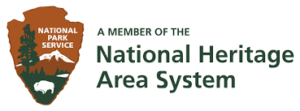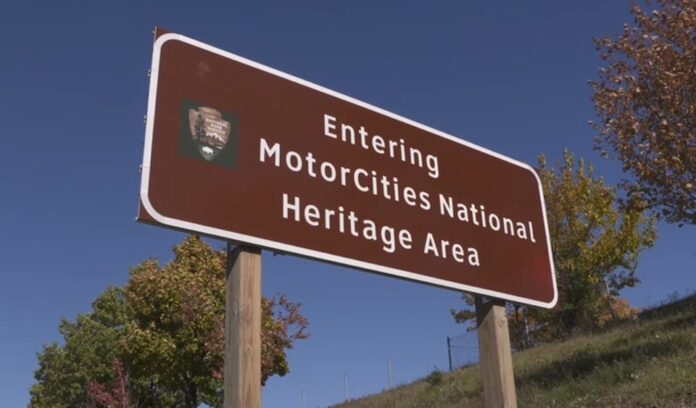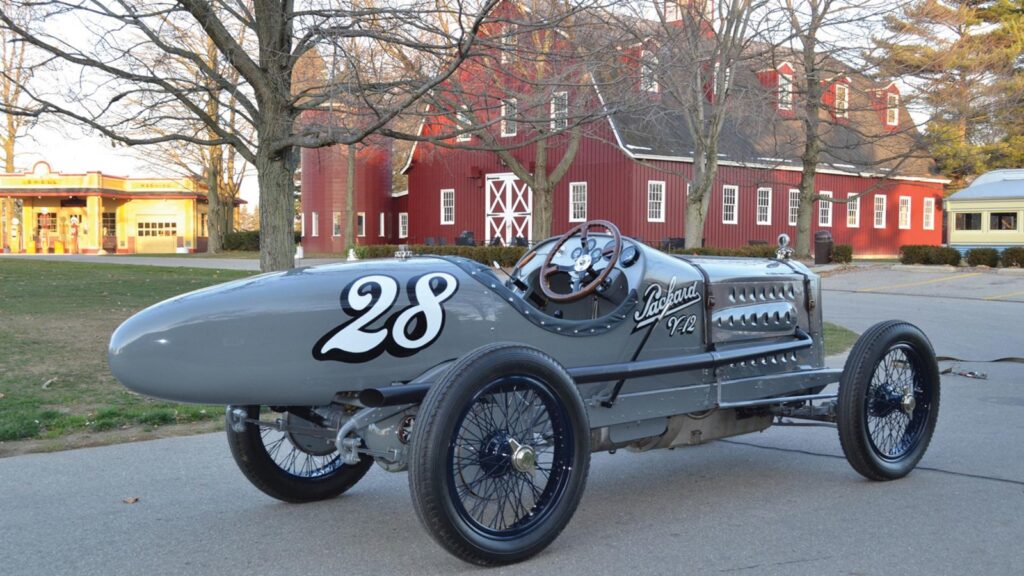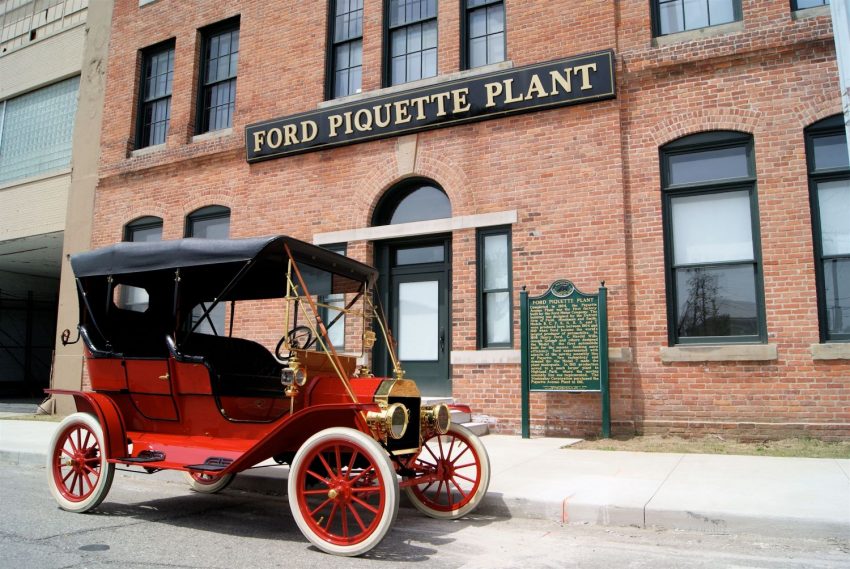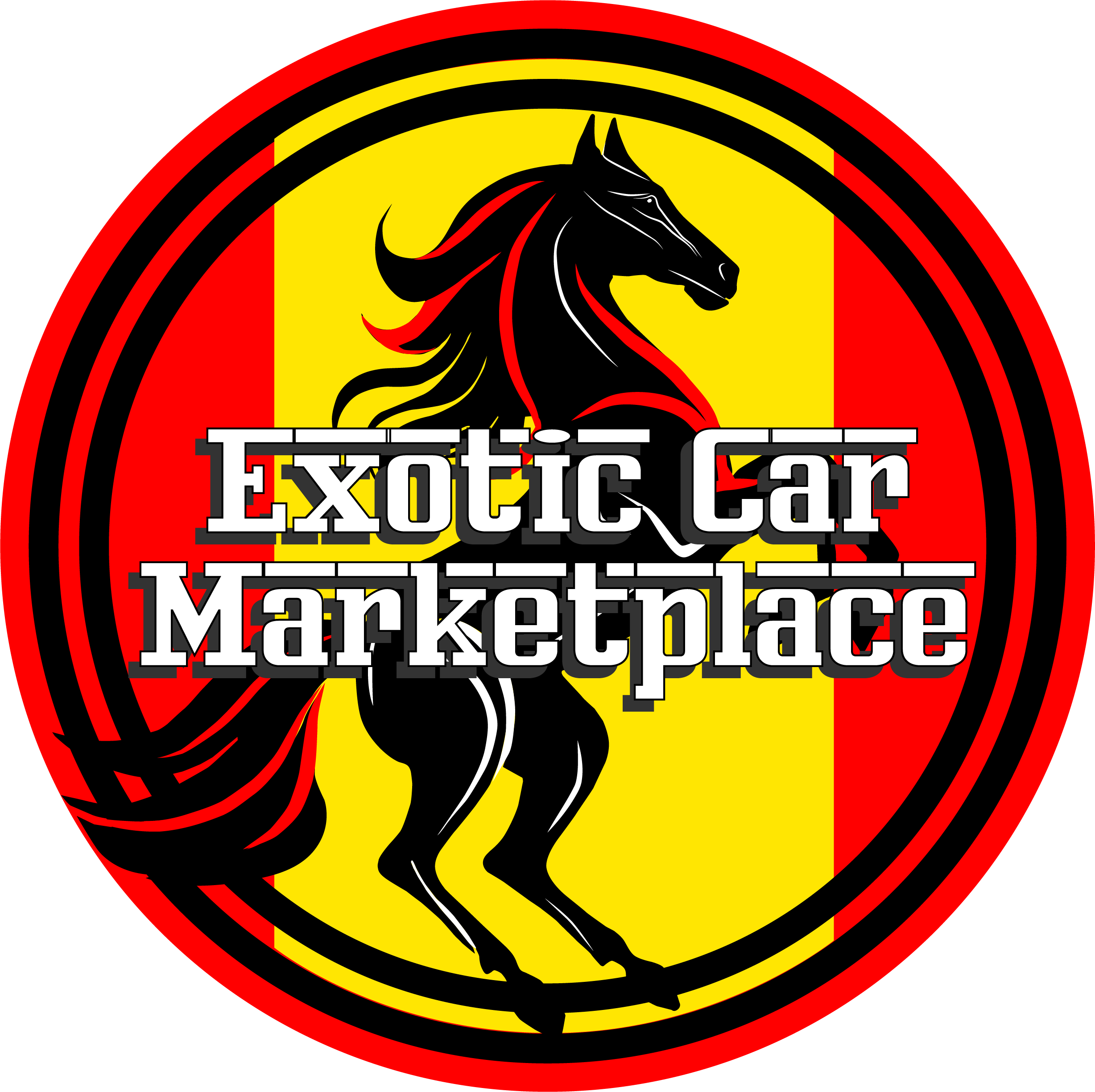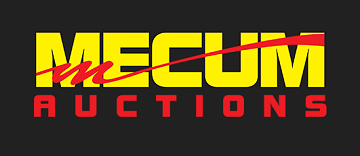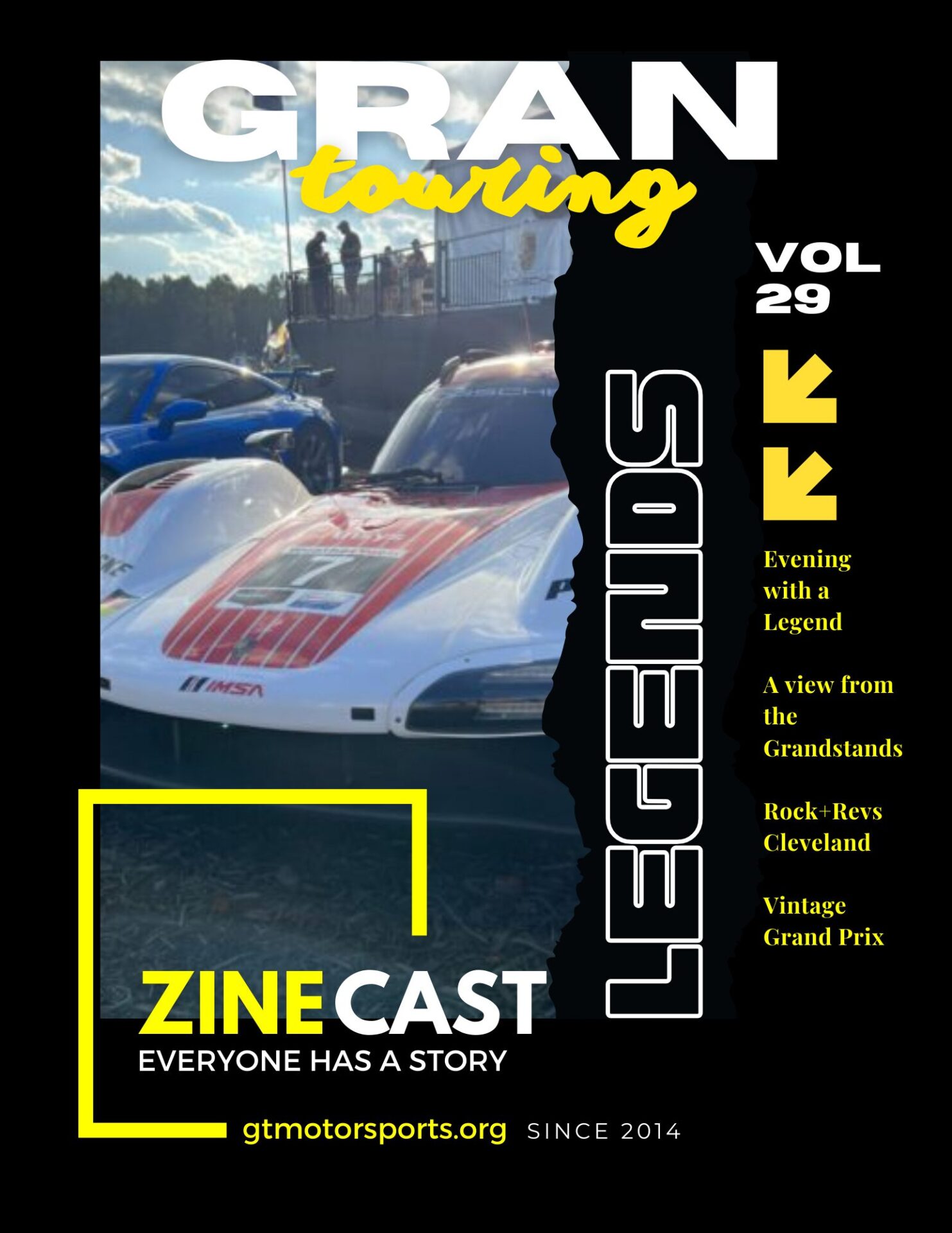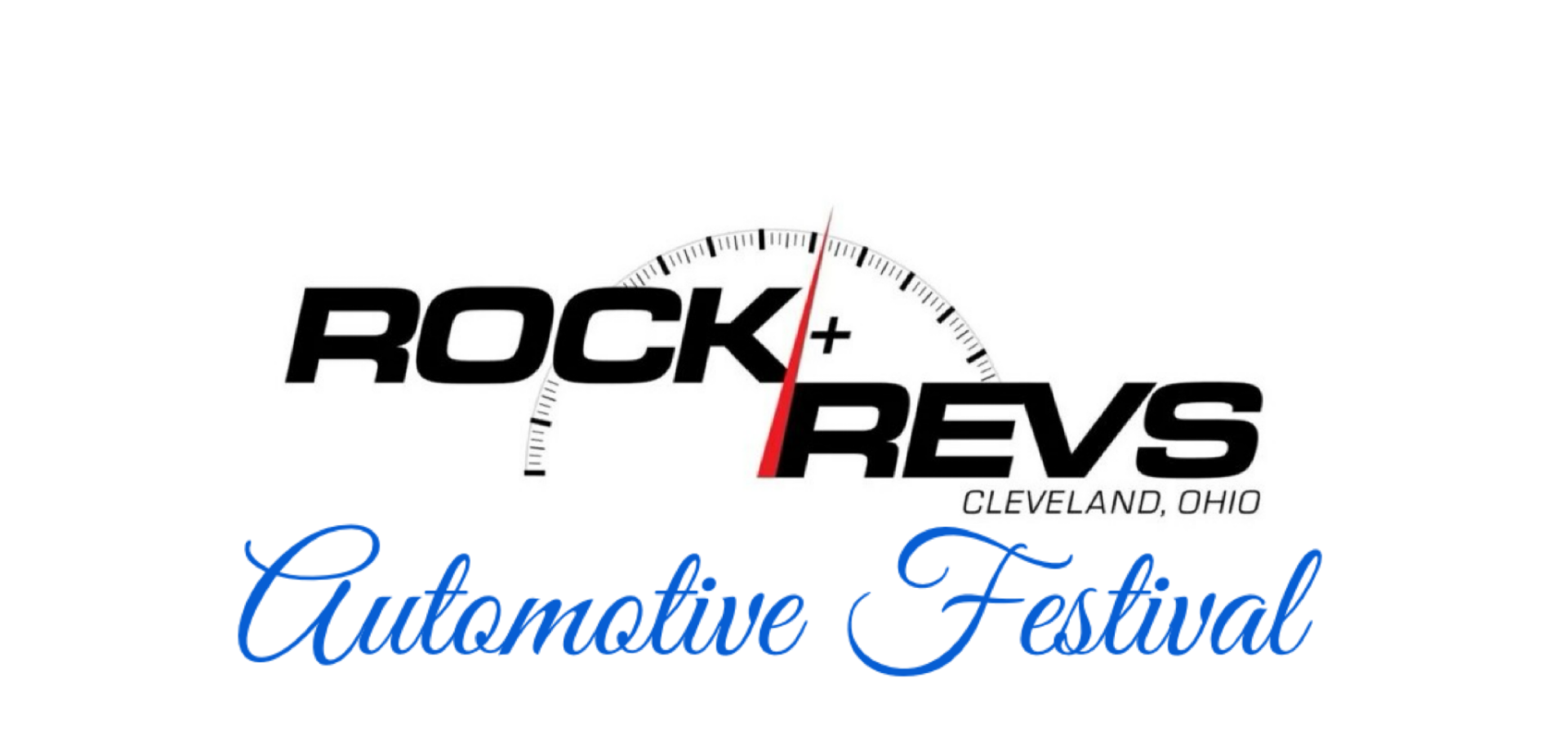Have you ever found yourself on a long road trip, cruising down the highway, and wondered what those “brown signs” along the roadside are all about? Or say to yourself, “I wish we had more time to stop and check that out?”
Well… if you happen to be in the Detroit-Metropolitan area anytime soon, you need to take that off ramp and check out the Motorcities National Heritage Area where they tell the stories of how southeast and central Michigan “Put the World on Wheels.” And with us is Director of Communications and Engagement Bob Sadler to explain why taking this particular detour needs to be part of your upcoming travel plans.
Tune in everywhere you stream, download or listen!
 |  |  |
- Spotlight
- Notes
- Transcript
- Highlights
Spotlight
Bob Sadler - Director of Communications & Engagement for Motorcities National Heritage Area

I am a seasoned marketing executive with a recognized expertise and track record of using earned, owned, paid and shared media to build brand awareness and generate earned and contributed revenue. I have experience in the travel and tourism, human services, education, and health care industries.
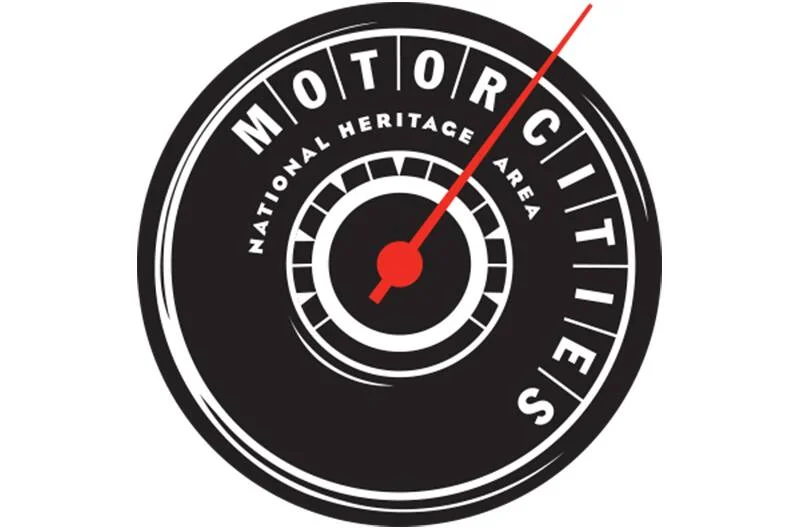
Contact: Bob Sadler at Visit Online!![]()
![]()
![]()
![]()
![]()
![]()
Notes
- Like we said in the intro, many of us have seen the signs, but what is a National Heritage Area?
- How did the Motorcities NHA get started? What’s its mission? How has it grown and evolved? What comprises the Motorcities NHA?
- The “brown signs” – there is a list on the website where they exist along the highway, and there quite a few, does this demarcate the boundary of the NHA? How big is the footprint of the Motorcities NHA?
- What are some highlights of the cooperative? (Who participates in the NHA?) – Moreover, top-5 places people should visit on their next road trip through the area?
- What is the Junior Rangers program?
- The Motorcities NHA has various Grants and Outreach Programs – what are those about, and how do they work? Who benefits?
- And its not all about travel and historical sites of significance, the Motorcities NHA also shares the stories from the community – elaborate on “Many Voices One Story” – “Making Tracks” and “Story of the Week” – what are they all about?
- You can become a member of the Motorcities NHA and helps support the cause. Is it limited to just Michiganders? What are the benefits of becoming a member? Are there different levels of membership? Special Events?
and much, much more!
Transcript
Crew Chief Brad: [00:00:00] Break fix podcast is all about capturing the living history of people from all over the auto sphere, from wrench turners and racers to artists, authors, designers, and everything in between. Our goal is to inspire a new generation of petrol heads that wonder. How did they get that job or become that person?
The road to success is paved by all of us because everyone has a story.
Crew Chief Eric: Have you ever found yourself on a long road trip cruising down the highway and wondered what those brown signs along the roadside are all about? Or maybe you say to yourself, I wish I had more time to stop and check that out. Well, if you happen to be in the Detroit metropolitan area anytime soon, you need to take that off ramp and check out the Motor City’s National Heritage Area, where they tell the stories of how southeast and central Michigan put the world on wheels.
And with us tonight is Director of Communications and Engagement Bob Sadler to explain why taking this particular [00:01:00] detour needs to be part of your upcoming travel plans. And with that, welcome to BreakFix, Bob. Hey, great. It’s great to be on and looking forward to it. Well, like all good BreakFix stories, there’s a superhero origin.
But in this case, we’re talking about something a little less tangible. We’re talking about a national heritage area. So, like we said in the intro, many of us have seen these signs and maybe oftentimes are clouded by the need to pull off where the blue signs take us. But let’s talk about what these brown signs are all about.
And first off, what is a National Heritage Area?
Bob Sadler: A National Heritage Area, it’s a really interesting concept because we are actually at Motor City’s National Heritage Area part of What the National Park Service refers to as a national heritage area system, there’s specific themes or industries or geographic features in the country that in the case of Michigan.
Ours is the automobile. We are the part of the world that put America [00:02:00] on wheels and put the world on wheels. Our National Heritage Area is devoted specifically to our country’s automotive and labor heritage. We are all about those tinkerers that became titans and the working people that became part of a middle class.
And all those stories that came together in this unique place with unique natural resources, unique geography, surrounded by the Great Lakes, and it created all of the right stuff. All in one place to make the automobile what it became. So we have the credibility and prestige that comes with being part of the National Park Service, but National Heritage areas, each in their own way are completely unique.
There are actually 62 different National Heritage areas around the United States. Motor City’s National Heritage Area happens to be the only one currently in the state of Michigan.
Crew Chief Eric: So a National Heritage Area as part of the [00:03:00] National Park Service, if we think about it maybe from a perspective that we’re familiar with, if any of us go camping or you’ve been to a state park or one of the state preserves, things like that, Is there a sense of preservation here too?
Is a national heritage area a protected area?
Bob Sadler: We work specifically in a number of areas, but one of the things that we try to do is to preserve the automotive heritage and labor heritage. So there is a preservation element of certain historic sites that were relevant to the creation of the automobile.
The moving assembly line, you know, all those kinds of places that were involved in the creation of the U. A. W. 1 key aspect of our mission is revitalization and preservation. Motor cities gives out grants. We’re involved in helping preserve key automotive sites, whether they’re old factories. Whether they’re homes of auto barons, there’s a number of different kinds of sites.
Sites that were relevant to [00:04:00] the creation of the United Auto Workers and organized labor in Michigan around the automotive industry. We have a three pronged mission where preservation and revitalization is one aspect of that. And then we also are involved in education and interpretation of telling that story.
And then the third prong is heritage tourism, where we are literally promoting and marketing this area of lower Michigan as a tourist destination for people who are interested in the story of how this state put the world on wheels, almost acting like a destination marketing organization, like a convention bureau or a tourism bureau.
Crew Chief Eric: So there had to be a catalyst or an inflection point that said, you know what, we need to preserve some of these old factories in these buildings, like you said, and some have been lost to time where the city has changed. The city has evolved. Somebody stood up and said, Hey, hey, stop, stop. This is part of our legacy.
This is what makes Detroit [00:05:00] an amazing part of the history of the world. As you’re saying, when did the Motor City’s National Heritage Area get
Bob Sadler: started? The National Heritage Area movement actually started in the late 80s. The first one dates back to the Reagan administration. The idea that became Motor City’s National Heritage Area started out in the 1990s.
And so in the 90s, National Heritage Areas were still kind of a new idea. There were people in Michigan who thought the automotive industry might be a really good match with this concept. There were a number of folks, a kind of a coalition that crossed education, key museums and historic sites, the state historical museum, a number of places came together.
And so the idea of creating a national heritage area in Michigan around automotive and labor heritage started to gather momentum. All of the national heritage areas. Need to be approved by acts of [00:06:00] Congress and then signed by the president. We had a champion in the United States House of Representatives in the late Congressman John Dingell, who was a longtime Detroit area congressman in November of 1998.
The bill creating the Automobile National Heritage Area was signed by President Bill Clinton. And again, it was championed by John Dingell in the House, the late Senator Carl Levin in the Senate, and November 6, 1998, what we now know as Motor City’s National Heritage Area was born.
Crew Chief Eric: So Bob, being a small, non for profit organization, how did you get involved with the Motor City’s National Heritage Area?
Bob Sadler: I actually have devoted most of my career Two nonprofit organizations. I actually spent 18 years at the Detroit Historical Society prior to joining Motor Cities. So I was actually at the Detroit Historical Museum, which is why I’m able [00:07:00] to talk so much about the specifics of the automotive exhibits and, and stuff in the collection there.
So I was there for 18 years and I joined Motor Cities in 2017. So I’ve actually been at Motor Cities now for almost seven years. So I’ve been steeped in history, just have delved into the automotive part of our history even more in the time since I’ve joined Motor Cities.
Crew Chief Eric: So were you a petrolhead by birth or were you birthed into becoming a petrolhead?
Bob Sadler: I would say I was not a petrolhead from birth. We actually, uh, was, uh, born and raised in the Cleveland area, where I tell you one thing, if Winton had beaten Henry Ford in that race that the two of them had around 1900 or so, I can’t remember the exact date, but if Henry Ford hadn’t beaten Winton in that race, Cleveland would be the automotive capital of the world and not Detroit.
Crew Chief Eric: Going back to the people that started the initiative back [00:08:00] in the 90s, do you think they were inspired by folks like Henry Ford and what he did with Greenfield Village? Because that was a concept of preserving history as well, where he brought in things like Edison’s lab into that environment, and that still exists today.
Is that also part of the National Heritage Area?
Bob Sadler: I’m sure that both his story and his aura Is definitely present in the creation of Motor City’s National Heritage Area, the Henry Ford Museum, Greenfield Village. They have a rouge factory tour. The story of Henry Ford actually crosses a number of our partner organizations and attractions.
Crew Chief Eric: I was noticing on the website, there’s actually a list of where you get notified when you’re on a road trip that you’re entering the National Heritage Area or you’re approaching it. To kind of map it out, how big is the footprint of the Motor City’s National Heritage Area?
Bob Sadler: The actual footprint covers over 10, 000 square miles, so it’s a pretty good chunk of the [00:09:00] lower peninsula of Michigan.
It translates out to 16 different counties. And a population, more than 6 million people. So it’s a pretty substantial portion of Michigan and it’s Motor Cities for a reason. It’s not just Detroit. Most people will think Motown. But it is Motor Cities because the National Heritage Area also includes Flint, the birthplace of General Motors.
the capital area around Lansing, which is the origins of RE Olds and Oldsmobile, and goes still further west to include Kalamazoo and Kalamazoo County, where they manufactured yellow cabs. Kalamazoo County is the home of the largest automotive museum in North America, that is the Gilmore Car Museum. And those brown signs, by the way, those are normally affiliated with Parks or national parks, or in our case, the National Park Service or [00:10:00] National Heritage Area System.
So when you see a brown sign, you generally know that it has something to do with a park, local or state parks. In our case, of course, the National Park Service arrowhead is included on our signs to show our linkage with the National Park Service. And there’s currently 14 of those signs in our national heritage area.
We hope to have more of them. We actually want to more than double those to about 30 signs. How many sites are there in total? When we first did a census back when the organization was being created, they came up with as many as 10, 000 different sites.
Crew Chief Eric: Wow.
Bob Sadler: Now, not all of them exist anymore. And we also have a network of what we call wayside signs, where there are small signs held up with posts in various communities around the National Heritage Area.
They help tell the story of different sites. Sometimes stuff is still there. Sometimes it’s telling a story that is now completely invisible to the public that you have to see the sign and [00:11:00] read the story there. And there’s 300 more of those.
Crew Chief Eric: So those brown signs, you know, now entering the Motor City’s National Heritage Area, they sort of demarcate the boundary, but how do you know where to go from there?
Are there guides on the website that says, hey, if you’re in this county or you’re in this place, these are the top 10 places to check out along I 75 or whatever it is. How do you guys organize all this to make it easier for those of us that want to travel and check it out?
Bob Sadler: The idea behind the signs is, either points of entry into the National Heritage Area, also to try to strategically place them around where there are clusters of a lot of our partner organizations, attractions, historic sites.
Around Detroit, you’ll find them when you enter from Canada via one of the bridges or the tunnel. On I 75, you’ll find a number of them both on the north and south entry points to the National Heritage Area, and you’ll find a number of them along Interstate 94. Around towns like Ypsilanti or Lansing and the Kalamazoo area.[00:12:00]
And then we actually have a find your road trip, interactive map. Our website has a number of ways that you can do that where organizations are how people can find their way. Uh, there’s a pull down menu where you can go by community. You can go by You know, there’s a number of ways that you can create your own itinerary and you can kind of mix and match right there on the website.
Another way we can do it is by stopping at one of our partner attractions and grabbing our passport guide. And the passport guide is kind of patterned. After the National Park Service passports, you know, you have seen those blue passports that look like your actual travel passport, but in the National Park Service case, you can take those to National Parks and you can get them stamped.
You can chronicle your travels. And so, in a similar manner, we have our own Motor Cities passport. We have about 25 different partner attractions that are listed in our passport book, and you can pick them up at any 1 of our [00:13:00] attractions. They’re outfitted with their stamps, then you can get started and collecting stamps at as many of them as you’re interested in visiting.
And there’s a map inside the passport book as well, so you can track where you are and where you might want to go next.
Crew Chief Eric: If you were planning a route for yourself, which I’m sure you’ve done many times before, what would you say are maybe top five places that people should visit?
Bob Sadler: Oh, I wish you wouldn’t have said five.
All right, top
Crew Chief Eric: ten then.
Bob Sadler: Well, I’ll tell you, I have more than a few. I’d like to break them out geographically. If you’re in the city of Detroit, there’s more than one. You want to stop at the Ford Paquette Plant Museum, which is the birthplace of the Model T. And it was the factory that most of the early Alphabet cars were made.
were created and where the Model T was first conceived and was first made until they outgrew it and then they moved on to the Highland Park plant. And the Highland Park plant, of course, was the one that was famous for being the place where [00:14:00] Ford perfected his moving assembly line and was able to produce Model T’s You know, one every 30 minutes, but it was created initially at this picket Avenue facility.
And that particular place is, you know, almost a poster child for what motor cities can do a success story of things. And it was a handful of people who were enthusiastic about Henry Ford and his story. Took this building, which was falling into disrepair and had a couple tenants, but it was not even involved in the auto industry in any way anymore.
And over time purchased parts of the building until they owned the entire building and then started undertaking renovations. To the building to create a museum and over time, they have managed to pull together enough resources that, you know, they’re open as a museum. They get 30 to 40, 000 visitors a year.
They have 1 of the few collections of the alphabet cars all in 1 [00:15:00] place and they have the most amazing tour guides. that can really bring the story to life. And you can see Henry Ford’s office. And you can see the so called secret room where he and his engineers and partners literally, in a closed off corner of this building, conceived the idea that became the car that became the Model T, the car built for the masses, the car that literally put the world on wheels.
That’s in Detroit. You got the Ford Paquette Plant Museum, and not far from there, the Detroit Institute of Arts has the amazing Diego Rivera murals, which were created in the 1930s, featuring the Ford Rouge plant. Which was the outgrowth from the Highland Park plant. So, if we follow chronologically, the Rouge was the industrial behemoth born of the success of Ford at Highland Park.
They made Model Ts up through [00:16:00] the late 20s. The Rouge was the next plant in the Ford’s progression and was where the Model A that succeeded the T, which was actually the second Model A that Ford produced. The Rouge is that site. And so the Diego Rivera murals were this, it’s, it’s, it’s hard to describe because it literally is four walls that surround you, a lot of symbolism there about the workers and the entrepreneurs, the leadership, Diego Rivera had a political point of view.
There’s his take on matters, but there’s allegory and there’s. There’s seedlings and there’s babies growing from, you know, and there’s all kinds of interesting imagery that goes to this industrial behemoth that makes these vehicles, you know, it’s, it’s an amazing piece of art. It certainly is one of the signature attractions when you visit Detroit.
Kiddie corner across the street from the Detroit Institute of Arts is the Detroit Historical Museum, which has a exhibit inside called America’s Motor [00:17:00] City. You can see a replica of the first car that drove the streets of Detroit, beat Ford’s quadricycle by a few months. It was Charles Brady King in March of 1896.
And you can see that you can see a portion of the moving assembly line from the Cadillac Clark Avenue plant, and you can see a whole lot of the automotive industry history as it was in the city of Detroit in that museum. So there’s kind of a big 3 in the city of Detroit, all very close by, you’d move out to Dearborn about 15 minutes from downtown Detroit.
And you have the Henry Ford, which is the Henry Ford Museum of American Innovation, which has. Multiple exhibits on the automobile, they have the automobile in American life, they have a racing exhibit now and Greenfield village, of course, that you’ve mentioned, you know, which features not just automotive, but the Wright brothers and Thomas Edison and all these amazing American inventors and innovators, you [00:18:00] know, the people who literally shaped our culture, shaped our industry.
Are responsible for where we are in the world today. A stone’s throw on the northern part of their parking lot is the automotive hall of fame, which tells the story of the people that made the international auto industry. The auto hall of fame is unique in the sense that it’s not just about the American automobile industry.
It’s literally about the worldwide automobile industry and telling stories through the eyes of the people that have made vehicles and have been responsible for mobility over the 130 plus years. You can go down the road to Ypsilanti, where there’s the Ypsilanti Automotive Heritage Museum, which was in an old Hudson dealership.
One of the last Hudson dealerships is now a museum. A stone’s throw from there is the Michigan Firehouse Museum, which has an amazing collection of fire apparatus, which were produced by the auto industry. You go up US 23 from the [00:19:00] Ypsilanti area and you get to Flint, the birthplace of General Motors. And there’s an amazing museum up there known as the Sloan Museum of Discovery, which has an amazing gallery named for Billy Durant, who was the founder of General Motors, one of the founders of Buick prior to that.
You can see the history of the automotive industry through a General Motors lens. You proceed west from Flint, and you can get to Lansing, where you can see where Ransom Olds held court. There’s the R. E. Olds Transportation Museum in Lansing. You get that story of Oldsmobile, and the R. E. O. brand, and the various vehicles that were made in the Lansing area.
Again, you keep going further west, and you get to Kalamazoo, as I mentioned, where they made yellow cabs right through the 1980s. And the Gilmore Car Museum, which is a fantastic place, very similar in the sense to the Henry Ford, where it’s a campus and there are multiple museums all in one place where you can see the [00:20:00] collection of Mr.
Gilmore, who was a CEO of Upjohn Pharmaceuticals and his wife’s family were the people who founded that particular company. And as he amassed wealth and was collecting cars, his wife said at some point when there just became too many cars in their garage and around their property, she told him, you need to just put a museum together for this.
That’s how the Gilmore Car Museum came to be. There’s just so much. It’s hard to put it into a top 5 or even a top 10. You need our passport book so you can see 25 different places that you can visit. And if you use the map on the website, you can find even more.
Crew Chief Eric: I think we take signs for granted. There’s so many of them that we have to read and kind of process, especially in a hurry when we’re driving down the road, you know, there’s even a science to signage and there’s a signage museum and all this, but you hear these stories, you know, my dad took me to this place when I was a kid, and, oh, if we didn’t read every sign in the place.
[00:21:00] Jokingly, we all look back on that, because we’re all kids at some point. We’re like, ah, you know, that was, it was such a march that we had to go through on these vacations. I’ve noticed that on the website, there’s a junior rangers program as part of the National Heritage Area. How have you guys designed that program to make these sorts of trips a little bit more exciting Petrelheads?
Bob Sadler: The junior ranger program, it’s inspired by and part derived from a junior ranger program that exists within the national park service. And it’s a relatively recent creation for us. We wanted to create something that incentivized. Families and children to learn more about the automobile industry and the stories that are told here in our 16 counties of Michigan and learn very specifically about auto barons and the labor story and all of those kinds of things.
There was a number of years that it took to kind of develop the program and then the pandemic happened. The Junior [00:22:00] Ranger program as it currently sits, if you go to MotorCities. org and you see the menu at the top of the home page, you’ll see Junior Ranger and when you click on it, it’s basically almost entirely a virtual program.
It’s the idea of looking at a map and figuring out what cool things or what cool stories are on the map. Right now you click on videos and you watch videos and things. We’re going to definitely add a second phase to the junior ranger program. We’re going to work on it in league with our partners and our various attractions to make it more hands on and allow for people to travel from site to site attraction to attraction.
And have specific things that they can do or they can look for at those sites, but as it is right now, it’s still kind of more of a virtual program and it has a number of different activities and things that children can do. There’s a part of activities that are geared toward 5 to 7. there’s 8 to 10 and then there’s age 11 plus.
[00:23:00] And if you do a certain number of activities and complete them and then show us proof that you completed them, then we can send you a badge that you are an official Motor City’s Junior Ranger.
Crew Chief Eric: I noticed that the Motor City’s National Heritage Area has various grants and outreach programs. Let’s talk a little bit about those.
How do they work and who do they benefit?
Bob Sadler: Grants are a big part of our mission. We received the majority of our funding through the National Park Service and therefore the Department of the Interior and the federal government. We have to be good stewards of the government’s resources. We actually have a grant program.
There’s two different kinds of grants. One is a challenge grant, which are up to 25, 000, and then there’s also a mini grant program for smaller projects up to 1, 500. We have kind of a rolling application process where each quarter we accept new applications as the funding each year allows much like the mission that I mentioned earlier with [00:24:00] revitalization interpretation and education and heritage tourism, we give priority to projects that fall under those 3 areas.
And then we also like to give a preference to projects that exemplify diversity, equity, inclusion and accessibility as well. Grants can be anything from construction related projects. Like I said, we helped the Ford plant museum over the years. With parts of their renovations from fixing a very large roof to having an HVAC system added to their building.
Recently, the Gilmore Car Museum received a grant for a new visitor orientation and event pavilion, which is outside. They host a number of events that are outdoors. Cruise nights and concerts and, and all kinds of different events and that particular grant will help them to have a key place to convene tour groups and special events.
You know, we’ve also done grants that have helped fund things like documentary films. [00:25:00] There was a recent documentary film called Detroit City of Hot Rods and Muscle Cars. It talked in great depth about the car culture of Detroit, which is even within the town that put the world on wheels. You know, we also have a very unique car culture.
There’s a lot of gearheads and people that tinker in their basements with their classics and they take them out during the week. They go to cruise nights and on the weekends throughout the summer, there’s big cruises all over the state of Michigan. This film kind of looks at that through many different eyes.
Including women involved in it, disabled people involved with it, Vietnam vets, just lots of different stories of people and their cars and how it becomes part of this interwoven into this fabric of this Detroit car culture. So, the grants are kind of all over, but they’re in those 3 key mission areas.
And then we also have a variety of programs. That include things like we were part of a coalition of organizations that built a park at the site where in 1932, two and a half years into the Great Depression. At that [00:26:00] point, workers at Ford Motor Company convened and marched through Detroit into Dearborn to the Rouge plant.
With a list of demands for Henry Ford, mostly around working conditions and fair wages. There was a lot of suffering in the worker community. This march turned out to be a seminal moment in the creation of the UAW. They clashed with Dearborn police and Ford security forces. Five workers were killed. And dozens were injured.
We worked with a number of organizations and actually created a park in a very underserved part of Southwest Detroit that not just tells the story, but also creates a place kind of a haven for people in the neighborhood. To enjoy a park, those kinds of things are part of the mission as well.
Crew Chief Eric: And what I love about this is that it’s not all about the travel and the historical sites.
It’s really the significance of the Motor City’s National Heritage Area. And what I came to really appreciate in understanding [00:27:00] more about your organization is the time you guys take to elaborate on these stories. And you have three different sections on the website. You’ve got many voices, one story, making tracks.
And then the story of the week. God bless whoever’s writing all these things or maybe you’re working with, you know, the society of automotive historians. I don’t know where you guys find the time, but there’s just this treasure trove of information on the website. I hope that we can express to people that it’s more than just planning your next road trip.
It’s checking out these stories and becoming more involved in the intimate backgrounds of these people’s lives and how it really changed the face of the world.
Bob Sadler: I’m glad you brought those up many voices. One story is our homage to diversity, equity, and inclusion in the sense that we tell stories that are undertold focusing on our minority communities.
So there are stories about the black experience in the automotive industry. There’s stories about Hispanic and Latino people in the automotive industry. There’s stories that relate to people with disabilities. [00:28:00] Obviously, you became familiar with the story of Ralph Teeter with the premiere of the Blind Logic film at the Automotive Hall of Fame recently.
That’s an amazing story. Before I even learned of the documentary, I had actually, myself, had become familiar with the story of Ralph Teeter. And Ralph Teeter’s story is one of the stories that we tell. And this Many Voices, One Story part of our website. There’s stories about people with autism. There’s a young driver trying to make his way through NASCAR, who is autistic, that’s from the Detroit area.
He’s a young African American and he’s autistic. He has a unique set of challenges as he’s moving up through the ranks as a race car driver. I had the opportunity to interview him and to talk about his story and his unique perspective and you just can’t help but root for someone like that. There’s stories that just come from so many different places that are in that particular section.
You Then we have making tracks, which is specifically devoted to the African American experience in the automotive industry that tells over a century of stories that a [00:29:00] lot of the African American stories in the auto industry have their origins with Henry Ford’s 5 day. Which was announced in January of 1914, he revolutionized the industry by saying he was going to more than double the salary of the workers, because it was very difficult work.
It was dangerous. It was hot and the turnover of employees. Was just ridiculous. He wanted to deal with that aspect of the turnover part by countering it by saying, if you can meet these criteria, you can make 5 a day for your work in our automotive plants. And this sparked a migration of folks from the American South and from Eastern Europe and from Africa and the Middle East.
It completely changed Detroit over a 15 year period from 1914 to the stock market crash in 29. Detroit grew unlike any city in the country ever has or frankly ever will. That was a big story [00:30:00] and the African American experience was a key part of that. So making tracks Starts with that migration, and then it gets into organized labor and how leadership within the African American community grew into the civil rights movement after World War Two, then there’s stories about the advancements and firsts of African Americans in the industry.
First professional engineers and first African American automotive manufacturing by companies that were owned by African Americans. The first African American to have a car dealership that was affiliated with one of the big three, all those kinds of stories you’ll find in the making track section of motorcities.
org. And then what I affectionately refer to as the franchise, which is the story of the week. I guess you could call it a weekly blog. New one comes out every Wednesday. It is distributed through an e newsletter that we put out. It’s free. It’s called You Ought to Know. Hits your inbox every Wednesday and the [00:31:00] franchise within that is our weekly story of the week.
These are all over the place. They’re basically different stories about some aspect of the automotive industry, whether it’s firsts, whether it’s specific models, stories of people, it really runs the gamut. Today’s story of the week, for example, was about Steve McQueen, the actor, and his automotive collection, and how he channeled driving the famous Bullitt Mustang in the movie Bullitt in the chase scene that everyone can remember, and also being a race car driver on the side and appearing in the movie Le Mans in the 70s.
Not only was he an actor and he, he drove in, in his, in the movies, but he also built a collection over his lifetime. Unfortunately, it’s life was cut pretty short 1980, only 50 years old when he passed away, but he did accumulate a pretty amazing collection of both. American and foreign cars. And so today’s story of the week is about Steve McQueen and his collection.
It [00:32:00] really runs all over the place and it’s put out in the e newsletter every week, and then it also is a big part of our social media because we talk about the story of the week and our social media close to the weekends. We have our weekend alert posts, which. Flag down specific events and things that are going on in the national heritage area.
Every weekend during the summer, there are many, many, many events going on. The story of the week is always pretty fun. More than anything that we’ve done over the years. It’s driven the growth of our website, the growth of our social media. Look for it every Wednesday.
Crew Chief Eric: You also mentioned that your funding in some ways comes from the National Park Service and the Department of Interior and things like that.
But also there’s an opportunity for us. petrol heads to become involved in the Motor City’s National Heritage Area and support the cause. And so on the website there’s a donation page, you become a member, all these kinds of things. Is becoming a member of the Motor City’s National Heritage Area limited to just Michiganders or can anybody sign up?
What are the benefits of [00:33:00] becoming a member? Are there different levels or tiers of membership? Can you like break that all down for us?
Bob Sadler: Absolutely. The answer in terms of is it limited to Michiganders? And the answer to that is absolutely not. Anybody can become a member of Motor City’s National Heritage Area.
Obviously, in most cases, a lot of the benefits are tied to things you can find within the state of Michigan and with our partner attractions. But individual membership starts as low as 30 for an individual family memberships are 65 and then there’s some higher levels that go up to 500. but in terms of the benefits, there are 15 of our partner attractions that offer either admission discounts.
Museum or gift shop discounts, membership discounts. There’s a variety of discounts that are available to people. If you actually used a couple of them, you’d actually more than pay for the amount you paid for the membership. You know, someone who wasn’t from the state of Michigan conceivably, if they were planning a trip to the national heritage area, they could buy a [00:34:00] membership.
And if they visited two or three or even more of our attractions and use their membership card, they can earn some significant discounts. There’s also an organizational membership. If you have a, an organization that is about automotive heritage, or it’s about local history, people can also become organizational members at different levels.
And the benefits of that are that, you know, you can be featured in our social media, our e newsletters, on our website. You can apply for our grants. Now that would be more for people within our organizations in the state of Michigan, but you get recognized as being a partner in all the stories that we tell as an organizational member.
It’s definitely not limited to people within the state of Michigan. Plus, to be honest, a lot of the people that are our supporters. That become our members, they’re not doing it because they’re looking for five bucks off admission. They’re doing it because they care about the stories we’re telling. They do it because we’re doing something important [00:35:00] that our mission of keeping those stories alive, getting those stories to as many people as possible and sharing that auto and labor heritage.
Those are the people that they’re going to want to support us. Regardless of what benefits it entails, our social media, our Facebook, we have 26, 000 followers on our Facebook page. It goes all over the country and around the world, Europe and Africa and Middle East and South America and beyond that are liking our posts and making comments and sharing their own stories or angles on some of these Detroit, Michigan focused stories.
You know, it’s become an amazing way to connect with people.
Crew Chief Eric: Well, it sounds like you guys have come up with a great way to diversify and augment the funding that you have, keep people involved, but not all of it is necessarily digital or just on the website. You guys have got other events and ways to interact with the Motor City’s National Heritage Area, right?
We do have
Bob Sadler: some special events [00:36:00] each year around our auto heritage. We created something about 10 years ago called Michigan Auto Heritage Day. Which is something that we do in conjunction with our state government, the state legislature and the governor’s office, where they declare it Michigan auto heritage day, gives us an opportunity to share some different stories and get some visibility around motor cities and our mission.
And what we do, we have other programs where we talk about telling the story, the interpretation. We have a speakers Bureau where we have speakers that go out to speak. To local historical societies, they go to libraries, they have a variety of topics from the people that made the auto industry, the different entrepreneurs, their stories about Rosie the Riveter and world war two and willow run and many aspects of the life of Henry Ford or Walter Chrysler or Billy Durant and the creation of General Motors.
We also work with our peers and our contemporaries that work with our [00:37:00] partners and we do lunch and learn type programs where we try to pick an aspect that might help them do their job better or easier, more efficiently. We also have awards of excellence that we hand out focusing around those key areas.
of education, interpretation, revitalization, and tourism. We try to put a spotlight on the work of key partners and individuals who are doing amazing work and keeping this story alive.
Crew Chief Eric: All right, so Bob, what’s next for the Motor City’s National Heritage Area? What’s the two, five, ten year plan look like?
Bob Sadler: Well, it’s a really interesting question because we’ve just completed our most recent strategic plan, which is going to cover the next 2 or 3 years. You know, we’re looking at a lot of things in terms of our partnerships with the various attractions and museums and organizations, international heritage area, as well as ways forward on many fronts.
So we’ve done a lot of inward looking, we’ve done a lot of sit downs [00:38:00] and surveyed our members. And it’ll be interesting to see how we’re starting to flesh that strategic plan out. And we’re starting to create specific tactics and plans attached to it. Some of the stuff is happening behind the scenes and is going to be tied to funding and discussions that we’re having at the state level.
But there are going to be a number of things that are going to be happening. We did recently receive a grant through the national park foundation that is tied to the upcoming 250th birthday of the country, an inclusive storytelling grant, and we’re going to be doing even more work segueing on what we’ve already been doing with many voices, one story and making tracks and finding a lot of those lesser known stories.
That are tied to themes that are among the foci of the 250th birthday of the country. We’re starting to roll that out right now, and that’s going to be happening, you know, over the next nine to 12 months, there’ll be a number of public [00:39:00] events and things around that. Suffice it to say, there’s going to be a lot going on leading up to 2026.
And there’s going to be a lot of things specific around. New initiatives and new ways to share these unique auto and labor heritage stories for being a three person organization. We’re a small, but mighty nonprofit that does a heck of a lot and has a great impact. You know, we actually say that each year, the programs and the grants and the things that we do to promote heritage tourism into Michigan generates a 489Million dollar economic impact and supports over 5000 jobs.
Michigan Technological University And generates 40 million in tax revenue. Small but mighty.
Crew Chief Eric: So, Bob, we’ve reached that part of the episode where I’d like to invite our guests to share any shoutouts, promotions, or anything else that we haven’t covered thus far.
Bob Sadler: Yeah, I mean, I think the biggest thing would be, we certainly have mentioned the website.
I do something on our social media. That’s unique. The first year I was at motor cities, I created [00:40:00] about 240 this day and auto heritage posts. And so for most every day of the year, if you go on our social media, predominantly our Facebook page, you will find something from our automotive history for almost every day of the year.
And we call it This Day in Auto Heritage. If you want to catch little factoids or little morsels of automotive history on almost a daily basis, our social media is definitely what you want to follow. The hashtag is This Day in Automotive Heritage.
Crew Chief Eric: The Motor City’s National Heritage Area links the world’s largest collection of cultural and labor organizations, museums, archives, factories, auto collections, and events to preserve the story of how tinkerers became titans and how they helped build the middle class.
While transforming manufacturing worldwide, the Motor Cities National Heritage Area Partnership is a non for profit corporation affiliated with the National Park Service. They preserve, interpret, and promote the region’s rich automotive and labor heritage in a way that is diverse. [00:41:00] Equitable, inclusive, and accessible.
And you can customize your next trip to the Detroit area or make a donation today by logging on to www. motorcities. org or follow them on social media at Motor Cities on Facebook, Instagram, and Twitter along with at Motor Cities NHA on YouTube. And with that, Bob, I can’t thank you enough for coming on break fix and sharing the motor cities, national heritage story with us.
The saying is you need to take the time to stop and smell the roses. But I think in this case, we need to take the time to pull off and check out what’s connected to those Brown signs.
Bob Sadler: Absolutely. I’m glad that we were able to do this and I’m hoping that we hit some new audiences with this podcast.
Thanks so much, Eric.
Crew Chief Eric: We hope you enjoyed another awesome episode of Brake Fix Podcast brought to you by Grand Tory Motorsports. If you’d like to be a guest on the show or get involved, be sure to follow us on all [00:42:00] social media platforms at GrandTouringMotorsports. And if you’d like to learn more about the content of this episode, be sure to check out the follow on article at GTMotorsports.
org. We remain a commercial free and no annual fees organization through our sponsors, but also through the generous support of our fans, families, and friends through Patreon. For as little as 2. 50 a month, you can get access to more behind the scenes action, additional Pit Stop minisodes, and other VIP goodies, as well as keeping our team of creators fed on their strict diet of Fig Newtons, Gumby Bears, and Monster.
So consider signing up for Patreon today at www. patreon. com forward slash gtmotorsports. And remember, without you, there would be no None of this would be possible.
Highlights
Skip ahead if you must… Here’s the highlights from this episode you might be most interested in and their corresponding time stamps.
- 00:00 Introduction to Break Fix Podcast
- 00:27 Exploring the Motor City’s National Heritage Area
- 00:53 Interview with Bob Sadler
- 01:30 Understanding National Heritage Areas
- 03:15 Preservation and Revitalization Efforts
- 05:06 The Origins of Motor City’s National Heritage Area
- 06:36 Bob Sadler’s Journey
- 13:14 Top Attractions in the Motor City’s National Heritage Area
- 21:07 Junior Rangers Program
- 23:12 Grants and Outreach Programs
- 27:34 Diversity and Inclusion Stories
- 32:32 Membership and Support
- 35:52 Special Events and Future Plans
- 39:43 Conclusion and Final Thoughts
Learn More
Consider becoming a GTM Patreon Supporter and get behind the scenes content and schwag!
Do you like what you've seen, heard and read? - Don't forget, GTM is fueled by volunteers and remains a no-annual-fee organization, but we still need help to pay to keep the lights on... For as little as $2.50/month you can help us keep the momentum going so we can continue to record, write, edit and broadcast your favorite content. Support GTM today! or make a One Time Donation.

If you enjoyed this episode, please go to Apple Podcasts and leave us a review. That would help us beat the algorithms and help spread the enthusiasm to others by way of Break/Fix and GTM. Subscribe to Break/Fix using your favorite Podcast App:
 |  |  |
The MotorCities NHA links the world’s largest collection of cultural and labor organizations, museums, archives, factories, auto collections and events to preserve the story of how tinkerers became titans and how they helped build the middle class while transforming manufacturing worldwide.
The MotorCities National Heritage Area Partnership is a nonprofit corporation affiliated with the National Park Service. They preserve, interpret and promote the region’s rich automotive and labor heritage in a way that is diverse, equitable, inclusive and accessible.
